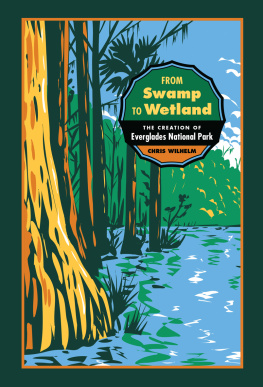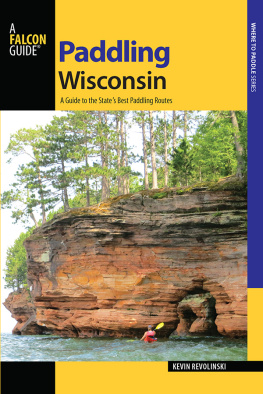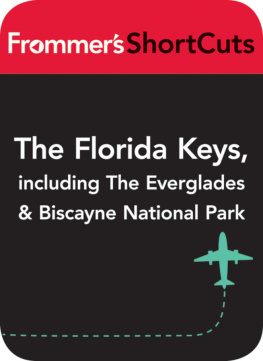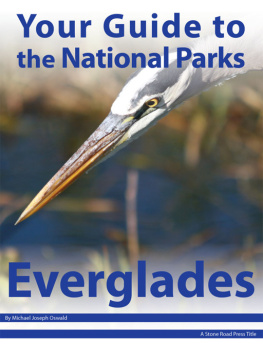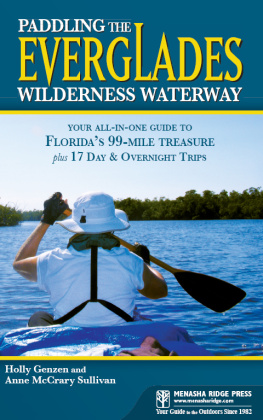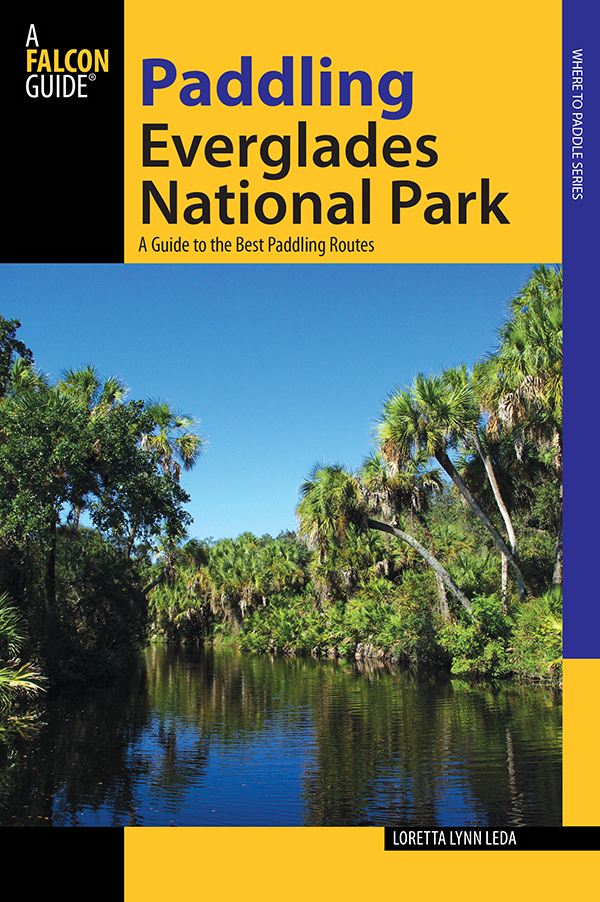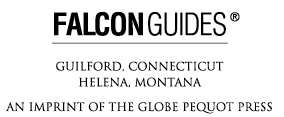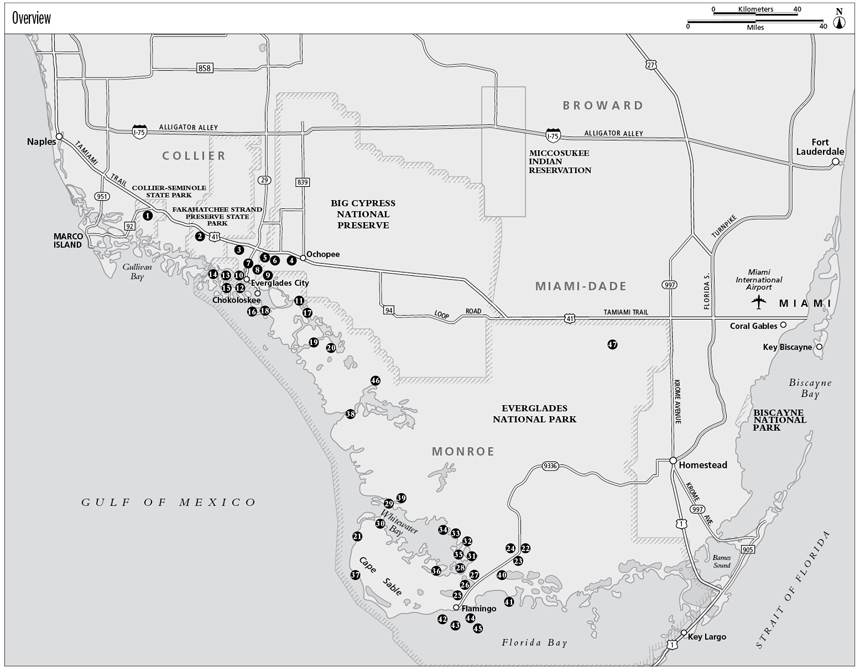Paddling Everglades National Park
A Guide to the Best Paddling Adventures
Loretta Lynn Leda
To my mom, Janice Terese Matyasik, in her memory, for her unending love and belief in me, for her support and encouragement. Even though you may not have been with me physically on these trips, you are always with me in spirit in my journey through life. I will miss coming home from my adventures and sharing my tales and photos of my trips, both domestically and abroad. We never had the opportunity to go to the spa together as we spoke about, so I will take my daughter in your place and think of you. And to another one of my heroes whom Ive aways looked up to, my brother Tim Vaughn (SGT MJR US Army). Thank you for all youve done and for your bravery and patriotism to our country. With love and faith.
Thank you!
I love and miss you!
Copyright 2010 by Morris Book Publishing, LLC
ALL RIGHTS RESERVED. No part of this book may be reproduced or transmitted in any form by any means, electronic or mechanical, including photocopying and recording, or by any information storage and retrieval system, except as may be expressly permitted in writing from the publisher. Requests for permission should be addressed to Globe Pequot Press, Attn: Rights and Permissions Department, P.O. Box 480, Guilford, CT 06437.
Falcon, FalconGuides, and Outfit Your Mind are registered trademarks of Morris Book Publishing, LLC.
Interior photos by Loretta Lynn Leda
Project editor: David Legere
Maps by Bruce Grubbs Morris Book Publishing, LLC
Library of Congress Cataloging-in-Publication Data is available on file.
ISBN: 978-0-7627-1149-9
The author and Globe Pequot Press assume no liability for accidents happening to, or injuries sustained by, readers who engage in the activities described in this book.
Contents
Acknowledgments
Writing a book is a team effort, similar to the efforts of a football team. You have the quarterback who calls the play, the author; the offensive team, in this case my guides; the defensive team, those who helped in fact checking and proofing; and the special teams, family for all their support and those individuals who went the extra yards in helping me put this together or make it through the goal posts. The coaches in this playoff game are my editor and publisher.
I would like to thank all these wonderful people for their patience, support, and assistance: Linda Frair, Bill Graf, Serena Rinker, Captain Charlie Wright, Captain Lauralee French, Edwin, Nicole and Owhnn (Everglades Hostel), Bob DeGross, Mike, Dr. Barry Rubenstein, Cherry Payne, Erik Egensteiner, Mark, Michael, Harold, Dr. Connie Mier, Tony Pernas, and Jack McNeel.
Also thanks to the staff at South Florida Water Management District, U.S. Fish and Wildlife, Florida Fish & Wildlife, The Nature Conservancy, Everglades National Park, the National Park Service, Big Cypress National Preserve, and the National Wildlife Refuge.
And to my husband, Todd, and my daughter, Ashley, thank you both for your unending love and support!
Introduction
Welcome to the Garden of Eden. The River of Grass. The Jewel of America. The Jungle. Welcome to the Everglades, where man meets Mother Earth.
The Everglades began forming 5,000 years ago when the sea level was rising due to increased rainfall.
Today the Everglades cover more than 14,000 square milesfrom Lake Okeechobee in the north, Homestead on the East Coast, south to Florida Bay and the Gulf of Mexico, and west to FL 29 near Everglades City. Big Cypress National Preserve is on the northwest border of Everglades National Park.
Paddling is a great way to explore the Evergladesmore than one-third of the park encompasses marine areas and estuaries under shallow water. Water birds, sea turtles, a variety of fish, and endangered manatees live in the parks waterways.
The best time to paddle in the Everglades or the Ten Thousand Islands is during the drier months, November through April. It is also cooler then, with less humidity and fewer pesky insects. However, the skies can still be sunny and the wind can suddenly pick up and be strong. Peak season is usually November through April. Hotels and campsites will be filled at that time, so plan ahead when scheduling your trips, including guided services.
It is possible to travel from the Everglades headwaters down through lakes and the Kissimmee River, and into Lake Okeechobee. From here you can take the Miami Canal south toward Everglades National Park. Although you wont be able to paddle the entire route, it will still be a lifelong memorable journey as you traverse the Glades like the Indians first did, by hiking and canoeing through the swamp.
Please remember that collecting plants and animals in Everglades National Park is prohibited. This includes such things as orchids, air plants, seahorses, starfish, conch, tropical fish, coral, sponges, and driftwood (except for fuel). One quart of non-occupied sea shells may be collected per person.
Not all paddles are going to be round-trip. There are many routes, islands, and such worth paddling, and you can choose which trips you want to combine. Most, if not all, can be one-day events with a shuttle.
The Honorable Mentions section at the end of the book identifies the paddles that didnt make the cut, for whatever reason. In many cases its not because they arent great paddles, but because theyre remote or environmentally sensitive to heavy traffic. Be sure to read through these. A jewel might be lurking among them.
I hope you enjoy many hours of paddling and viewing and that this guide is helpful to you. I hope you have as much fun paddling these routes as I have had compiling them. The friends I have made and the experiences I have embraced while researching this guide will stay with me for a lifetime. Come see the world through emerald-colored glasses with me.
Florida History
From Native Americans to farmers, southern Florida has been a political hot spot for centuries. Michael Grunwalds book The Swamp is a tearful journey of the destruction and possible resurrection of the Everglades. Grunwald chronicles how people first tried to drain and then reclaim the land and how the U.S. Army Corps of Engineers tamed the beast with levees and canals, converting half the Everglades into sprawling suburbs and sugar plantations. The River of Grass stopped flowing and 90 percent of its wading birds vanished.
South Florida people migrated here about 11,000 years ago. They are believed to have been descendents of Paleo-Indians, who became known as the Tequesta on the southeast coast and the Calusa on the southwest coast. Both tribes built their villages at the mouths of rivers and on islands. They subsisted on shellfish, turtles, deer, small mammals, and wild plants. They hunted with nets and shells and canoes made from chiseled-out cypress logs. They used shells to create picks, drinking cups, chisels, fishhooks, and other tools. They used shark teeth to make knives and mud for making pottery.
The historical shell mounds, found on southern islands off the Florida coast and believed to have been burial and ceremonial sites, were originally just middens (refuse) of discarded shells.


